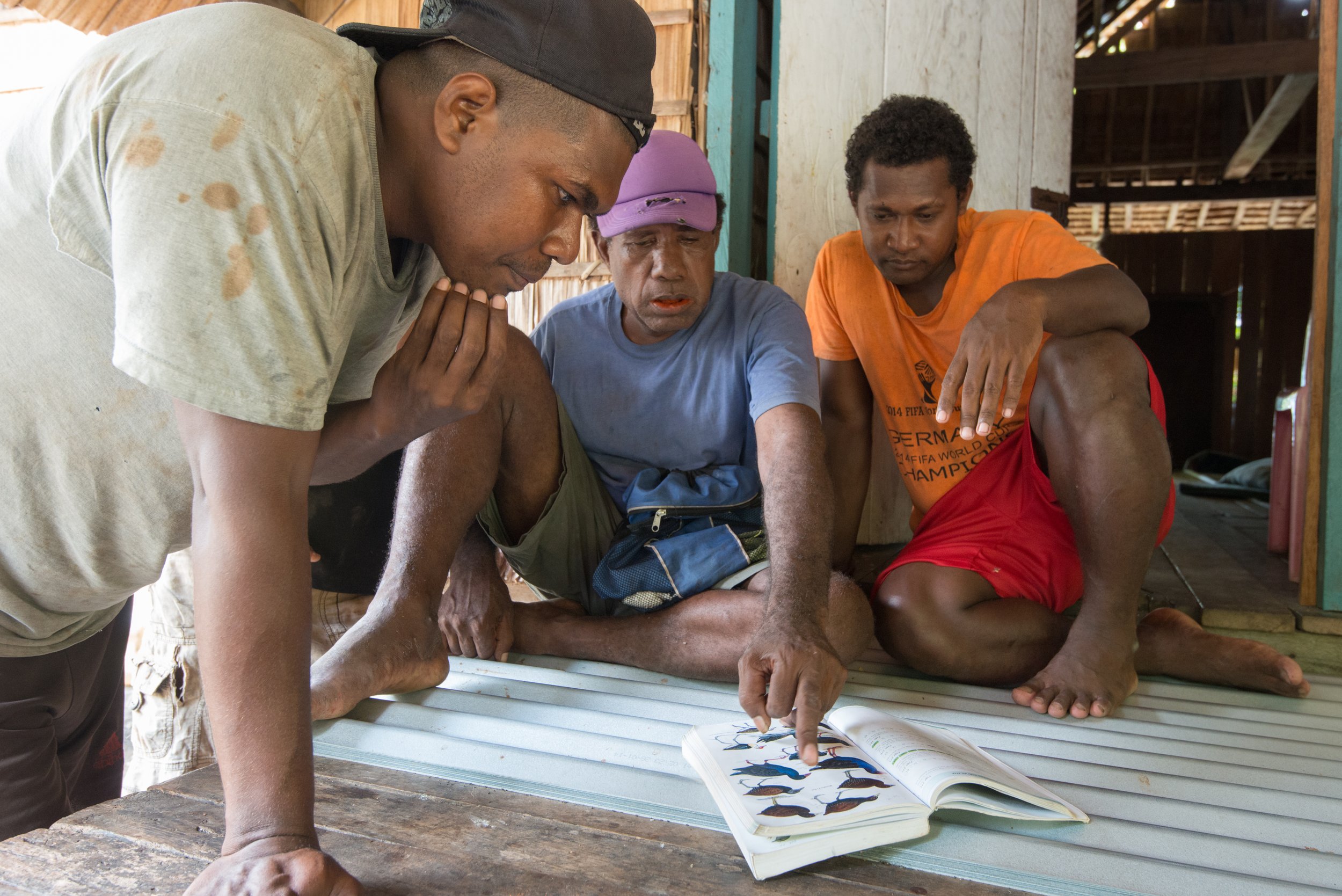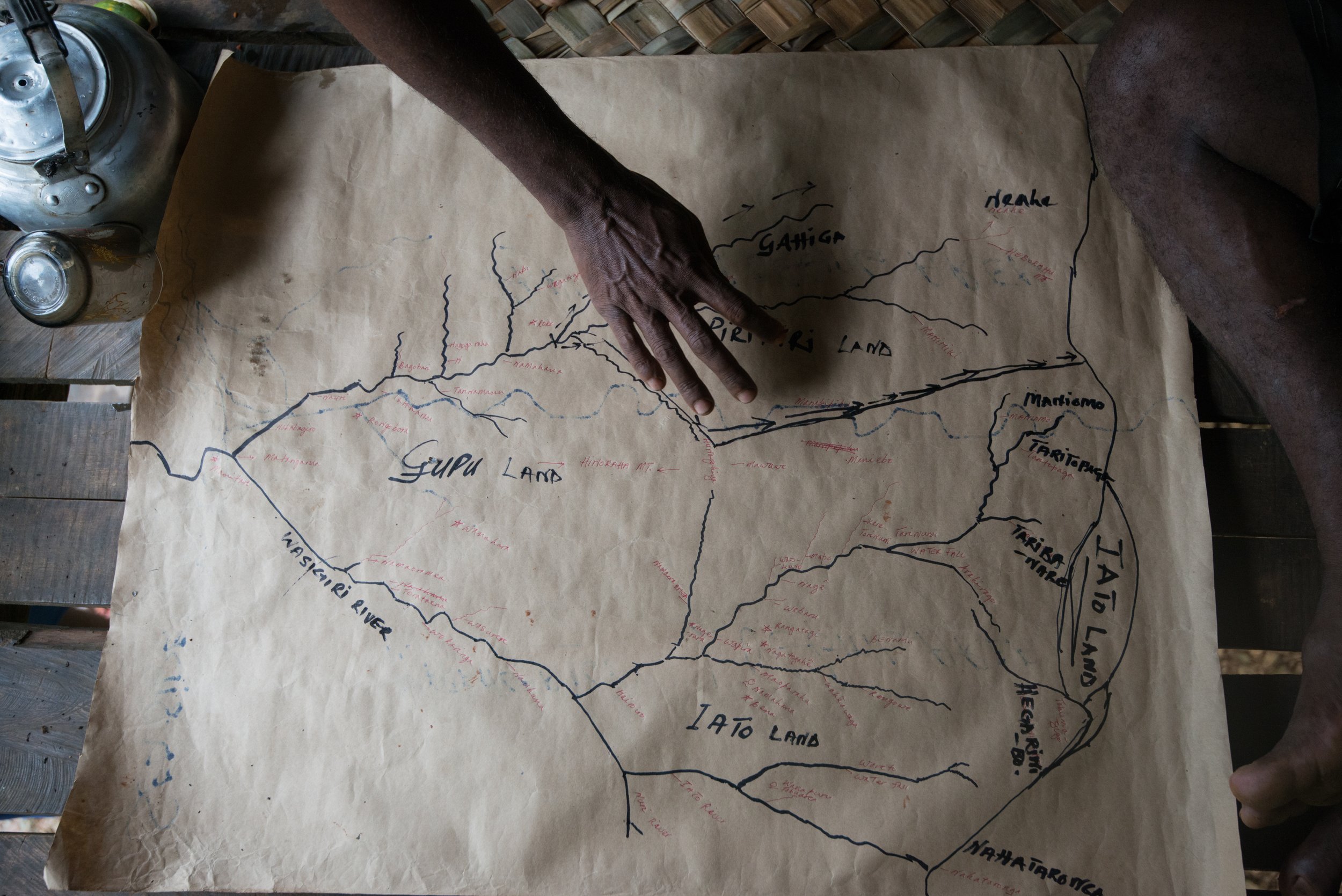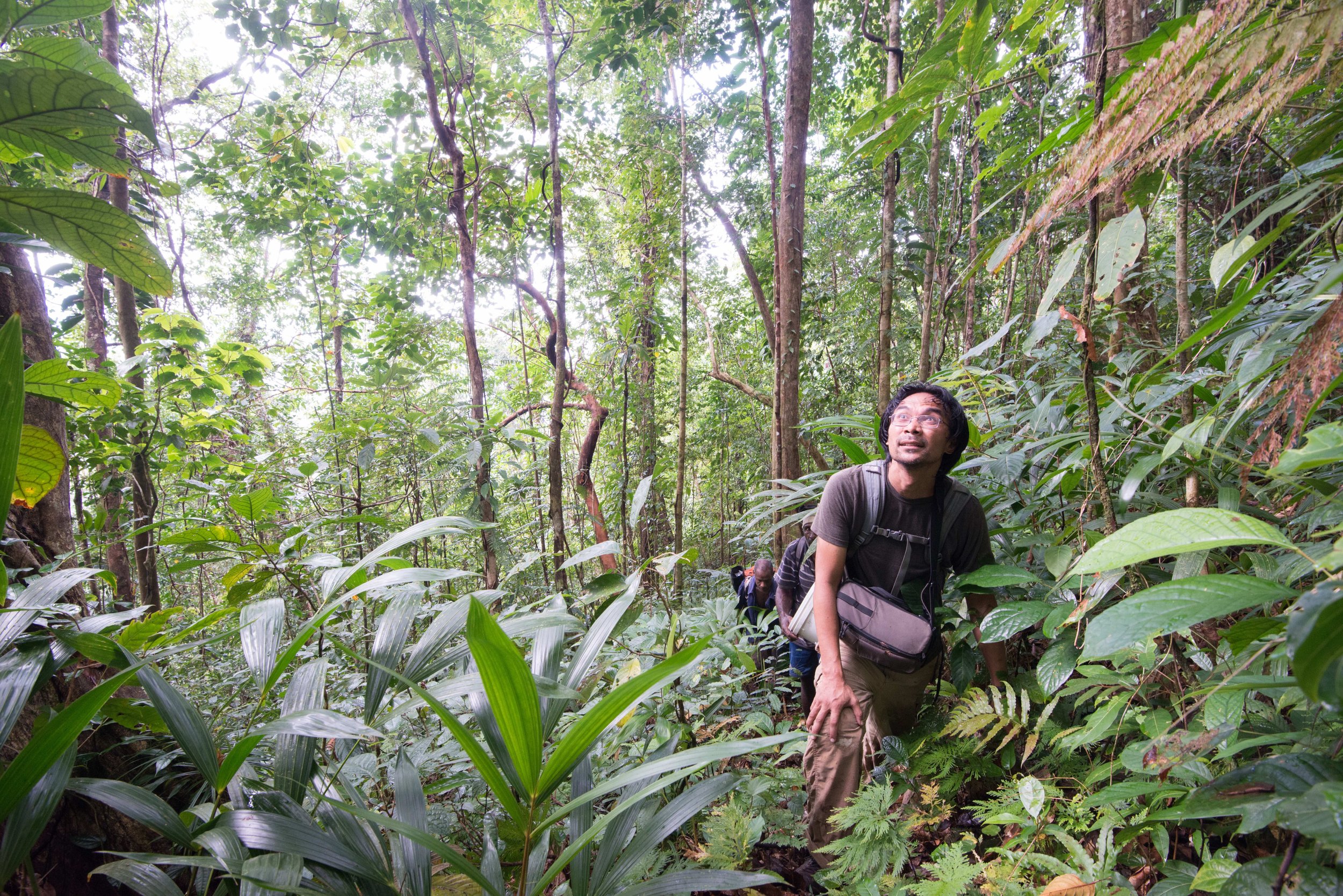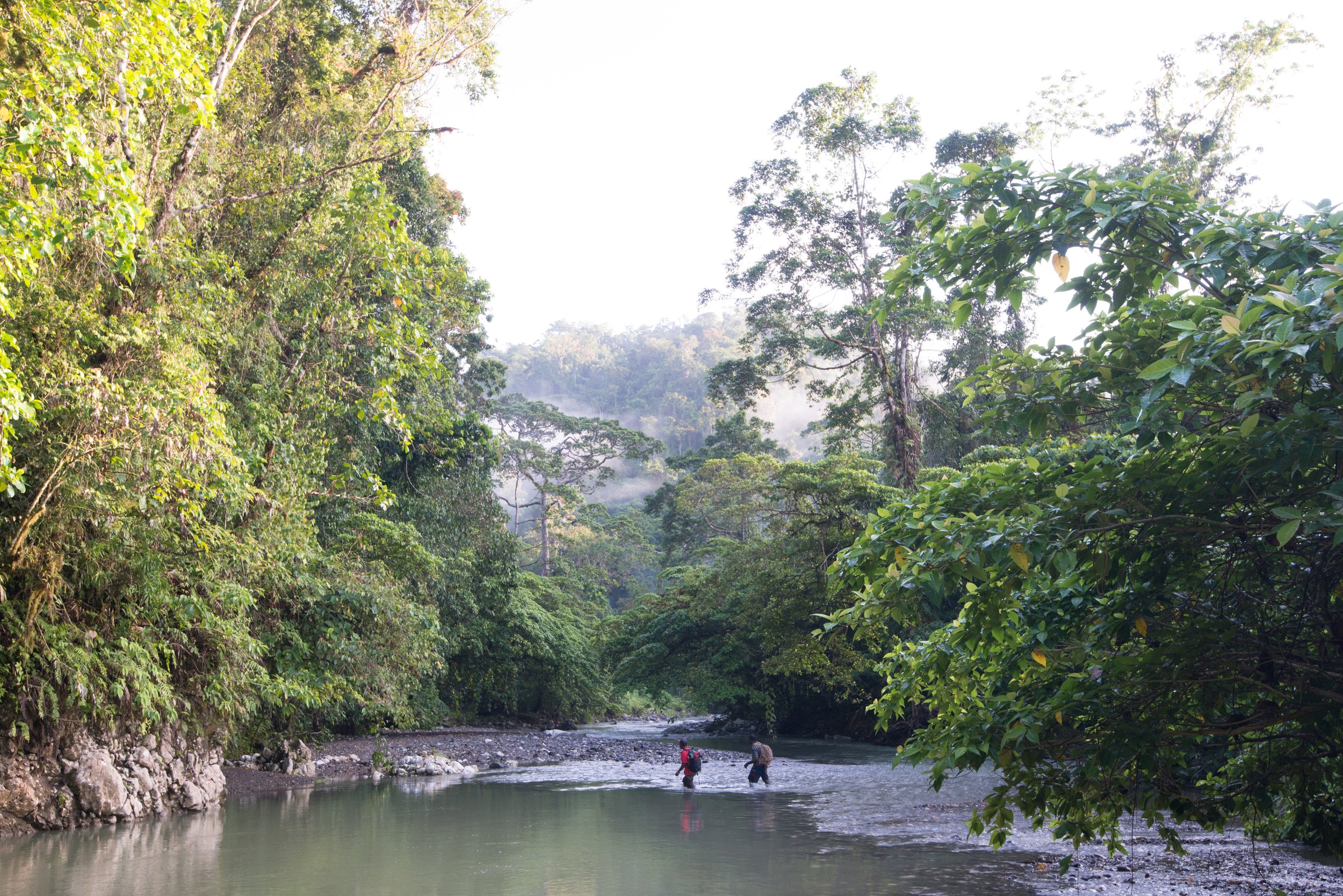Last Chance for the Makira Moorhen
Solomon Islands
The Bird Conservation Fund raised $5,000 to support a team led by John Mittermeier (Director of the Search for Lost Birds at the American Bird Conservancy) and a team of colleague to conduct a search for the Makira Moorhen (Pareudiastes silvestris) on Makira Island in the Solomon Islands. The team departed for Makira Island in June 2023 and we will have updates by late Fall 2023.
When the Makira Moorhen (Pareudiastes silvestris) was first seen by a European ornithologist in December 1929, the scientist who encountered it, a well-traveled and usually stoic German ornithologist by the name of Ernst Mayr, was so overwhelmed with excitement that he nearly fainted. Blue-gray with a bright red bill and legs, the moorhen is unlike any other bird found in its native range in the eastern Solomon Islands. Mayr, who would go on to become one of the leading evolutionary biologists of the twentieth century, recognized immediately how special the moorhen was but despite his best efforts Mayr was only able to find a single individual. No scientist has seen another Makira Moorhen since.
The Makira Moorhen is classified as Critically Endangered according to the International Union for the Conservation of Nature (IUCN) and, with no confirmed documentation of the species in 94 years, it is undoubtedly one of the rarest and most poorly-known species of bird on earth. It has been highlighted as a top priority “lost” species by the Search for Lost Birds partnership between American Bird Conservancy, Re:wild and BirdLife International and is one of the 100 highest priority bird species according to the Zoological Society of London’s EDGE (evolutionarily distinct and globally endangered) program.
Long before Mayr encountered the Makira Moorhen, the bird was well-known to local people on Makira who call it kia, a name likely derived from the bird’s call. Local knowledge of kia has always provided the connection for the scientific world to learn about the species. The kia that Mayr saw had been captured by a local boy who carried it into his camp. Likewise, the only other published report of a Makira Moorhen is a description of the species that Cain and Galbraith (1956) received from a hunter who saw the bird in 1953. Unfortunately, neither the name of the boy who caught the kia in 1929 nor the hunter who observed it in 1953 have been recorded.
Between October 2015 and February 2016, John C. Mittermeier, Lonsdale Taka, James Suafuria, Hudson Bae, George Wabeasi and J. Albert C. Uy conducted a four-month study on Makira to search for the moorhen with support from the National Geographic Society, the Zoological Society of London, the Mohamed bin Zayed Species Conservation Fund, and the University of Oxford. The team circumnavigated Makira, set camera traps at 10 localities for a total of 707 camera/days, conducted interviews and awareness campaigns in 33 communities across the island, and spent a total of 99 days in the field. They did not find the moorhen. However, they did receive more than 50 reports from people who claimed to have seen a bird that could have been the kia, including 18 reports of possible sightings since 2005.
The 2015-2016 project concluded with a question mark. After a monumental search effort, the team had found no evidence of a living Makira Moorhen and yet the persistent accounts of possible sightings were impossible to ignore. What could explain this? Had the species gone extinct only a few years or months before the team arrived? Was there a tiny remnant population whose surviving individuals were too elusive for them to find? Or were people confusing the kia with other species?
Seven years later, this project seeks to answer those questions. With a team that includes many of the same researchers from 2015-2016, they will revisit the communities from the previous study to do follow-up interviews seeking new reports of the moorhen. In addition to this, they will survey one of the last sites on Makira that has not yet been searched for the moorhen, a large area of inland marshes near the village of Tetere. With these combined methods, they hope to provide a final assessment of whether or not the Makira Moorhen still exists and understand why reports of the bird continued into the early 2000s. If they conclude that the moorhen has gone extinct, the study will be a final opportunity to document firsthand accounts of the species and act as a case study for how local knowledge and interviews can be used to understand extinction. If they find it, the rediscovery will be one of the most noteworthy resurrections in the history of ornithology and a call to action to begin immediate conservation efforts. Beyond the implications for the moorhen itself, these visits to communities will help to support conservation efforts on the island including the newly-developed Yato Conservation Area in eastern Makira. By recording the project with high quality photography and video, they plan to share the story of this mysterious bird and its island home with a wide public audience.





